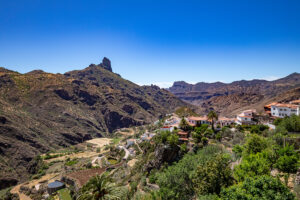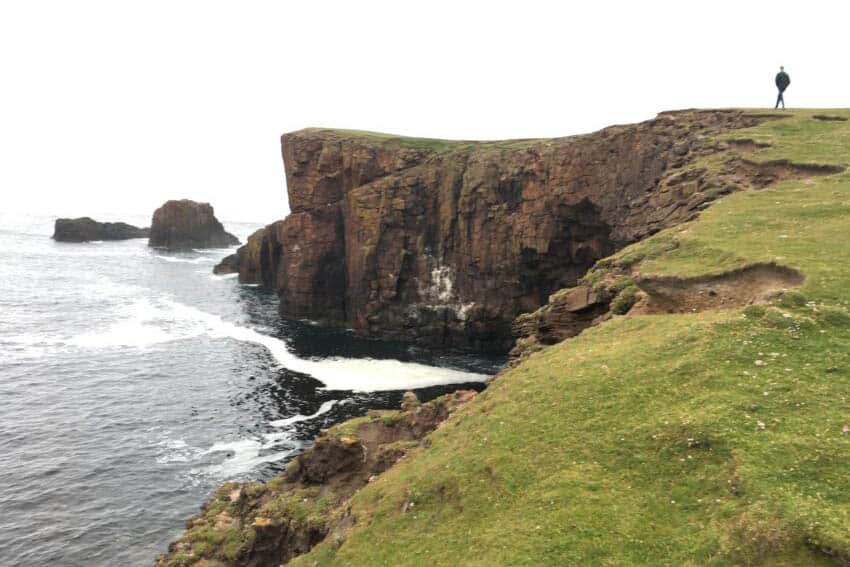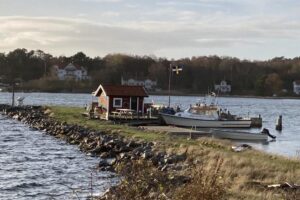Birding in the Falkland Islands
By Rachel Dickinson

I bird to travel and I travel to bird – it works both ways. Although I’m not what I would call a keen birder – I can’t hear birdsong and tell you what species it’s coming from – I am observant and can usually figure out which end of the binoculars to look through.
I love looking at birds and noting their colors and markings and watching their behavior. On a recent trip to the Falkland Islands, this bird-love was put to the test.
A Windswept Archipelago
The Falklands–-a British overseas territory–is a windswept archipelago set three hundred miles off the coast of Argentina in the frigid waters of the South Atlantic. Next stop – South Georgia Island where Shackleton ended his famous search for the South Pole.
The Falklands is a you-can’t-there-from-here kind of place and if you’re traveling from North America you have to take the weekly flight from Santiago, Chile. But that means you have a week to explore the islands once you’re there.
1982 War
In case you’ve been living in a cave for the past month, 2012 marks the 30th anniversary of the 1982 Falkland Islands conflict. Argentine forces invaded the islands and left 74 days later after being thumped by the British.
The Falkland Islanders tend to be more British than the British in some ways and it’s like stepping back to Britain in the first half of the 20th century as you travel through a land populated by the descendants of Scottish sheep farmers and English sailors.
Three thousand people live in the Falklands along with about a million sheep and ten million birds
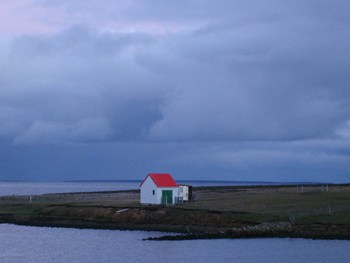
(I’m making those last numbers up but you get the drift). People travel from island to island by FIGAS the island airline service, which flies planes that hold 8 to 10 people, and lands on airstrips that are nothing more than grassy fields.
If you’re lucky, the pilot will let you sit in the co-pilot’s seat and you can chat as you fly over islands and mountains and rough seas.
I read about the birds of the Falklands before traveling there and was really looking forward to seeing black-browed albatross, five species of penguin, and flightless steamer ducks.
On my first island-hopping trip, I was headed to Bleaker Island, which would get me at least two penguin species, the steamer duck, and maybe a black-necked swan.
The owners of Bleaker – Mike and Phyl Rendell – met me at the airstrip and drove me the length of the island (three miles) to the “settlement” (their home, two guest houses, and the house of the farm manager).
There are no roads on Bleaker – there are no roads on most of Falkland’s islands – so Mike headed overland pointing out where the penguin colonies were and the freshwater pond.
After I got settled, I put on my boots and rain jacket (the weather in the Falklands is synonymous with changeable), slung my binoculars around my neck, grabbed my camera and headed out to find some birds.
Watch out for the Skuas
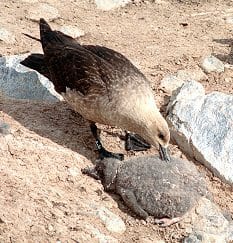
Have I mentioned the skuas? These are huge, predatory birds that look like ubergulls. They are the bird bullies of the islands harassing other birds to drop their food, attacking and devouring young birds, swooping and diving on anything they don’t like, including people.
I first met them on Fair Isle in the Outer Hebrides where I was hit on the head from behind by a skua as I walked along a road. When you’re hit, you see stars and you don’t forget the incident. As I walked away from the settlement, I saw that there were skuas everywhere.
I walked along the fenceline figuring that the skuas might take me for a moving fence post. They eyed me as I walked past and I know they were deciding whether or not I was worth harassing.
I climbed through the fence and entered an area of amazing tussock grass – huge five-foot-tall clumps of grass – and followed a little path toward the sea. I smelled and heard the rockhopper penguins before I saw them. These funny little penguins have yellow feathers sticking out the top of their heads and when they walk they waddle a couple of steps then give a little hop (hence the name).
It was molting season so some of them looked to be in a serious state of undress as they lost last year’s feathers and were growing new ones.

I headed back through the grass and through the fence and toward the sandy beach where the gentoo penguins come in after a day of fishing. Walking on the grass close-cropped by both sheep and upland geese, I saw big patches of what looked like heather – it’s called diddle-dee in the Falklands.
This, I discovered, is where the skuas lived because I stooped to look at the little pink flowers on the diddle-dee when one of those big brown birds came right at me.
I ducked and then started to run toward the beach feeling like I was channeling Anne Bancroft in the schoolyard scene in The Birds.
Gentoo Penguins
Gentoos are medium-sized penguins and everything they do is adorable. I sat panting on the beach from my skua-induced run and watched gentoo penguins emerge from the blue-green surf, stand up, then do their waddling run toward shore with flippers akimbo.
And they were curious about me — coming closer and closer as I sat still. The Caribbean-colored water, white sand, and bright white and black of the penguins put me in a relaxed trance-like state until I knew I had to walk back… through skua-land.
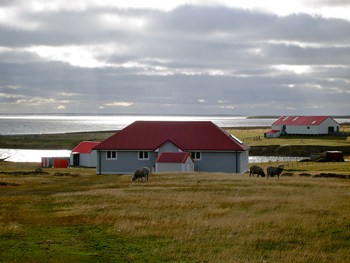
I stuck to the beach for as long as I could, searching for a piece of driftwood in an island group not known for trees. I found a three-foot piece of wood – what might have been a two-by-four a hundred years ago – and picked it up to use as my skua protection.
I headed inland, spying plovers and dotterels in the grass on the way to the freshwater pond to look at the black-necked swans.
I wandered off course and saw several skuas flying low, looking for something to harass, menace, or eat. I started running, waving the two-by-four above my head yelling “Get out of here! Leave me alone!” Two of them double-teamed me and came straight at me hitting the stick.
Ready for Combat
At that point, I lost all interest in birds except for the ones that were trying to hit me. The faint two-track road that ran down the middle of the island lay ahead and I ran for it.
The skuas got bored – they had me right where they wanted me – and left me. I held my driftwood high, ready for combat, knowing there could be a sneak-attack from the rear.
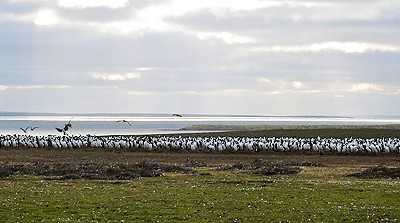
I passed the tussock grass and the rockhopper colony – spying a pretty little tussock wren at the edge of the grass — when I saw thousands of Imperial cormorants – large black and white birds – heading toward the island, bringing food to their young.
They flew low over me and landed about five hundred yards away on the crest of a little hill. There were tens of thousands of cormorants in the colony – many of them young birds just leaving the messy ground nests – and several dozen skuas were gliding low over the crowded colony hoping to nab a young bird or a bit of fish dropped by an adult.
I swung wide, hugging the fence line, and was thrilled when I saw the little settlement up ahead. As I walked between the Rendell’s home and the guesthouse where I was staying, I stopped and knelt down to take a photo.
Two skuas rose from the diddle-dee and hovered right in front of me like they were curious. I dropped my camera and started waving my stick.
They looked puzzled then settled back down in the patch of diddle-dee, watching me as I ran to my guesthouse.
Feeding the Skuas
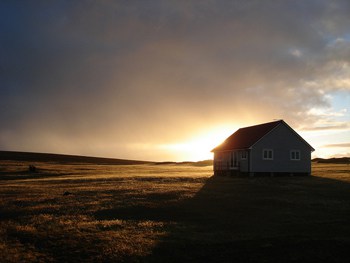
Later, over a wonderful dinner of lamb, broccoli, new potatoes, apple crumble, and a bottle of merlot, Phyl and Mike told me that Elaine, one of the farm managers, feeds the two skuas near the house so they associate people with food.
We talked about people, politics, and birds, birds, birds, and we listened to the braying and fussing of the Magellanic penguins in the colony right behind their house as we talked long into the night and the sun set on Bleaker Island replaced by a billion stars.
Bleaker Island —
Owners are Mike and Phyl Rendell
Phone number: +(500) 21084 / 32491
Falkland Islands Tourist Board —
This website has accommodation listings and everything you might want to know about visiting the Falkland Islands
Time to go? They are in the southern hemisphere so our winter is their summer. Check out LAN airlines for flights to the Falklands through Santiago, Chile.
There aren’t many travel agencies that will get you to the Falklands and help you with a week-long itinerary, which is how long you have to stay because the plane to and from Santiago goes once a week. Goway.com has trips to the Falklands. Sample itinerary
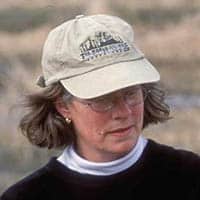 Rachel Dickinson lives and writes in Ithaca, NY, and is a regular contributor to Huffington Post. Visit her website
Rachel Dickinson lives and writes in Ithaca, NY, and is a regular contributor to Huffington Post. Visit her website
- The Wild Mississippi: 2340 Miles Across Ten States - April 8, 2024
- Exploring the Floating Villages of Tonle’ Sap Lake - April 3, 2024
- Woman Traveling Solo on Turkish Buses - March 27, 2024


